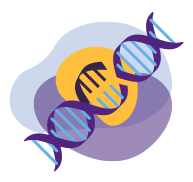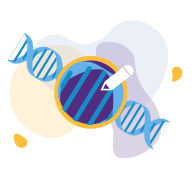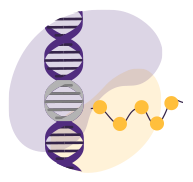Target
A
Break
The protein creates a break at the targeted location. This allows the gene-editing mechanism to work.
Correct
Gene editing technologies may correct the mutation by turning a gene on or off. They may also provide a new section of DNA to repair a mutation.
Build
The newly edited gene tells the body how to build proteins to potentially change the way the body functions.
With this overview of gene editing in mind, it’s time to take a closer look at 1 type of gene editing.
Learn more
Sign up to receive the latest resources direct to your inbox.




